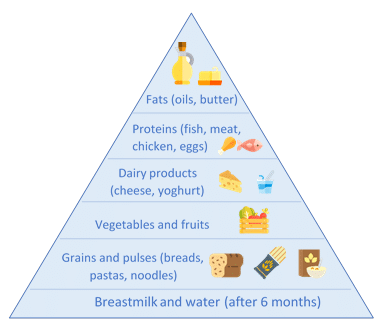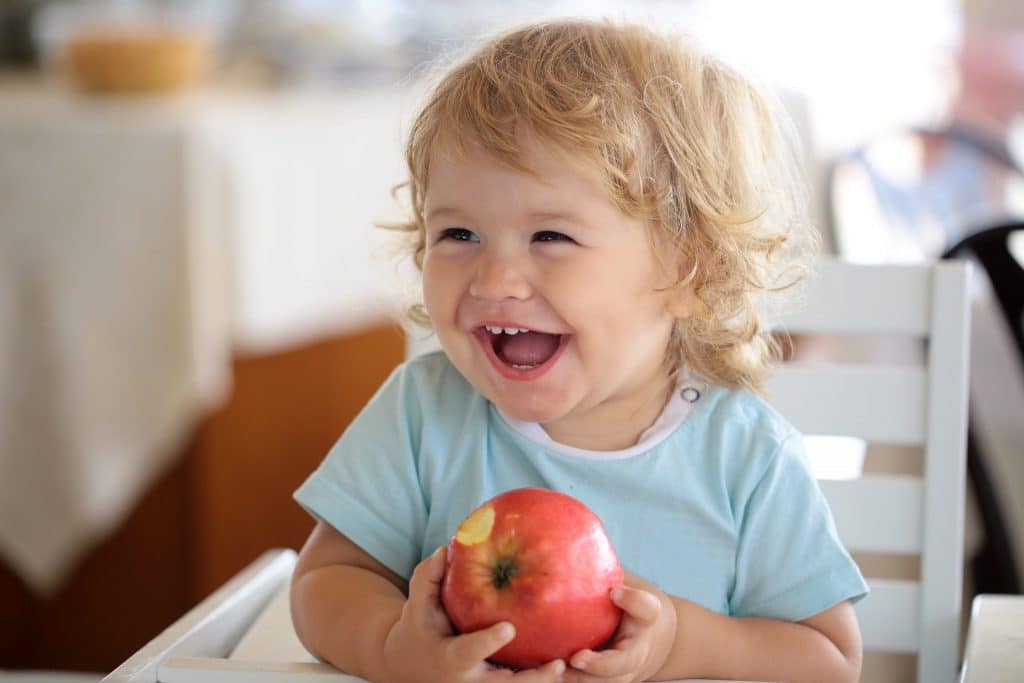The Importance of Childhood Nutrition
We’re all aware that making sure our kids get the right nutrition is imperative to their overall development. But are all nutrients equally important? Or are some proteins, fibers and multivitamins for kids more beneficial at this age? Here are some things we should keep in mind to ensure a balanced diet for kids.
What Are the Key Nutrients for Kids?
The right balance of essential nutrients helps children with their physical as well as mental development. Getting the right dose of proteins helps build, maintain and repair muscle tissues, while a fiber-rich diet can help with digestion and healthy bowel function. It is important to keep in mind that while words like fats and carbohydrates are often considered taboo in healthier diet plans for adults, for kids, they have numerous benefits. Especially omega-3, omega-6 and fatty acids. Carbohydrates derived from natural sources provide kids with all the energy they need to get through their day. With school, homework, sports, extracurricular activities and hobby classes, they need the right amount of energy to keep them going.
Here are some examples of:
| Foods high in protein | Foods high in fiber | Foods high in healthy carbohydrates | Foods high in healthy fats |
|
|
|
|
What Are The Most Important Vitamins For Kids?
Getting a grasp on the ABC of essential vitamins is simpler than you think. But let’s just say it’s more of an ABCDEK:
Vitamin A
Vitamin A is the eye doctor. It improves eye health. Some other benefits include inflammation reduction, improved immunity and better-looking skin. It’s found in colorful vegetables like carrots, sweet potatoes, spinach, squash, kale, cantaloupe, apricots, red bell peppers, broccoli and mangos, helps with improving vision, bone strength, hair growth, nails and skin health, and boosts immunity against common infections.
Vitamin B
Vitamin B is more of a group of essential vitamins rather than being a single one. Like different members of a rock band, each of them plays a key role. This group includes Vitamin B1, Vitamin B2, Vitamin B3, Vitamin B5, Vitamin B6, Vitamin B7 and Vitamin B12. Together they improve your child’s metabolism and help produce red blood cells. Grains like wheat and oats, meat and fish, eggs, milk, yogurt, leafy green vegetables, beans or green peas come packed with these. If your child isn’t too fond of these, please ask your doctor which multivitamins for kids can supplement their Vitamin B intake.
Vitamin C
Vitamin C is the Band-Aid of the vitamin family. It helps repair red blood cells, bone and tissue, speeds up the healing of cuts and wounds, and improves the health of blood vessels and gums. Guavas, oranges, strawberries, pink grapefruit, cantaloupe and mangoes are a great source for Vitamin C for kids.
Vitamin D
Vitamin D is the sunshine vitamin. Because soaking in some sun is the best way to absorb this vitamin. It helps the body absorb calcium and is important to build strong bones and teeth. After all, stronger bones make stronger kids. On days when it’s too hot to go outside, salmon, mackerel, egg yolk, yoghurt, orange juice, milk or cheese can be good alternatives to get the daily required dose of Vitamin D for kids.
Vitamin E
Vitamin E is the force field vitamin. It’s commonly found in nuts and seeds like almonds, sunflower seeds or peanuts, and helps prevent infections and boosts the body’s immune system in the fight against germs. So, you don’t have to prevent your kids from playing and occasionally getting their hands dirty.
Vitamin K
Vitamin K is the Wolverine vitamin. It keeps the platelet count up in your children – in simple terms: it helps the blood clot quickly when they fall and cut themselves. Eggs, meat, fish, liver, leafy green vegetables such as spinach and kale, cabbage, broccoli, asparagus and cauliflower are excellent sources of this vitamin. Together, they keep kids active, energetic, more immune to common infections and diseases, sharper, more alert, and less likely to be cranky.
Why is Iron Important For Kids?
Iron is one of the most important nutrients for a growing child. Low levels of iron in the body can often lead kids to feel lethargic, low on energy, and in some cases anemic. One of the key benefits of iron is that it helps produce hemoglobin, which carries the much-required oxygen throughout the body. Another one of the important iron benefits is that the right iron-level in the body aids with the development of the brain. Foods such as fish and red meat are most easily absorbed by a child’s growing body, so a healthy, balanced diet for kids should include at least one serving of meat or fish per day.
Between the ages of 1 to 3, children can be rather fussy about what they eat. So, ensuring that they get their daily dose of iron can be difficult. This is where iron supplements come to the rescue.
Encourage Them to Eat Every Colour of the Rainbow
Since the beginning of time, getting kids to eat right has been one of the greatest challenges for any parent. The trick is to cleverly blend what you would like them to have with what they would rather be having. If there’s one thing toddlers tend to be repelled by it’s monotony. That’s where the color palette comes in. A colorful plate is the best of both worlds. It looks exciting, intriguing, and nutritious, all at once. Let’s break it down further.1
Here are some examples of fruits and vegetables of the rainbow palette:
- Red fruits and vegetables like tomatoes, strawberries, raspberries, watermelons etc.
- Orange fruits and vegetables like peppers, carrots, tomatoes, peaches, oranges, pumpkin, butternut squash etc.
- Yellow fruits and vegetables like bananas, pineapples, plums, melons, sweetcorn etc.
- The greens like broccoli, celery, kale, lettuce, spinach, sprouts, kiwi fruits, green apples etc.
- Blue and purple color foods like blueberries, blackberries, eggplants, figs, beetroot, plums, grapes etc.
Having a plate full of different colors, combined with a variety of foods with complimentary nutritional properties will ensure that your child gets an appetizing and well-balanced diet. To make sure that your child gets the correct amount of each nutritional type, it’s important to understand the six-layer food pyramid for kids above 1 year old. At least one element from each layer should be included in each meal to maintain a balanced diet for kids:
However, do not forget that breastfeeding is the best nutrition for your baby and is highly recommended as breast milk contains the essential nutrients, antibodies and prebiotics your baby needs. Breastfeeding is recommended for the first three years of life with exclusive breastfeeding during the first six months.
This help provides all the required nutrition for kids while giving them a variety to choose from and try out. Giving them more of a variety is not always the most efficient solution. Sometimes, presenting the same food in creative ways can lead to be more appealing, without compromising on the nutritional content. Cutting vegetables like carrots and beetroots in playful shapes, creating characters with cheese slices, or simply arranging everything on a place to resemble different animals can excite kids, encourage them to try everything on the plate, and prove to be an effective educational tool.
Giving your kids the right nutrition can sound intimating, but once you get the hang of it, you only get better with time. Even with a varied diet, it can be tricky for your toddler to get the recommended amount of iron they need each day.

- James A. Joseph, Daniel A. Nadeau, and Anne Underwood, 2002. The Color Code: A Revolutionary Eating Plan for Optimum Health. Hyperion, New-York.
Further Reading
Your toddler’s immune system is still developing and it will continue to develop during the first 3 years.
Breastfeeding is the best nutrition for your baby and is highly recommended as breast milk contains the essential nutrients, antibodies and prebiotics your baby needs.




